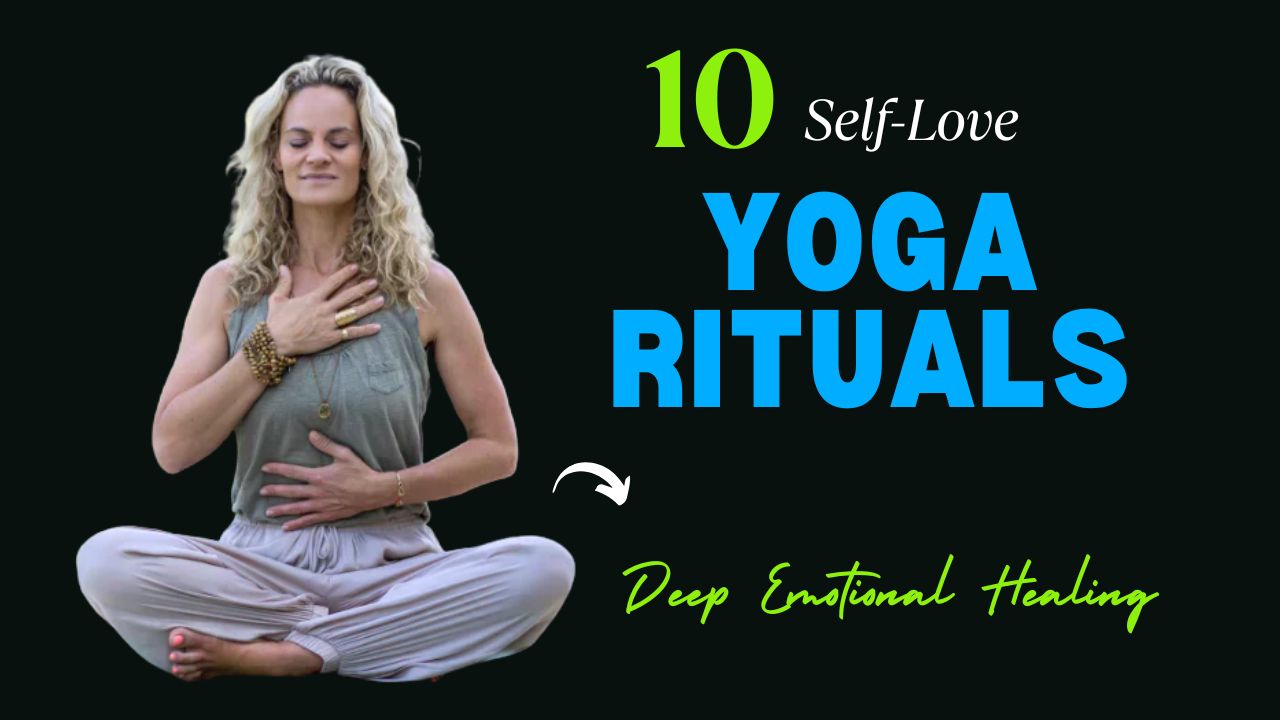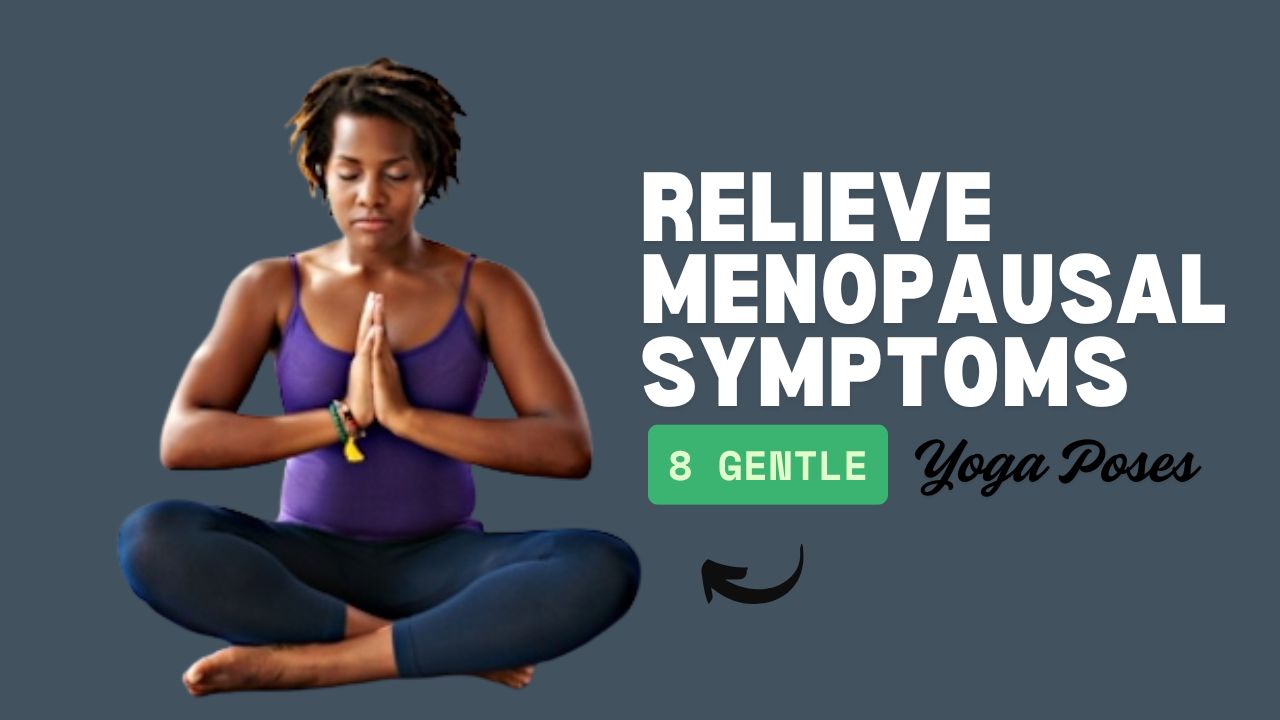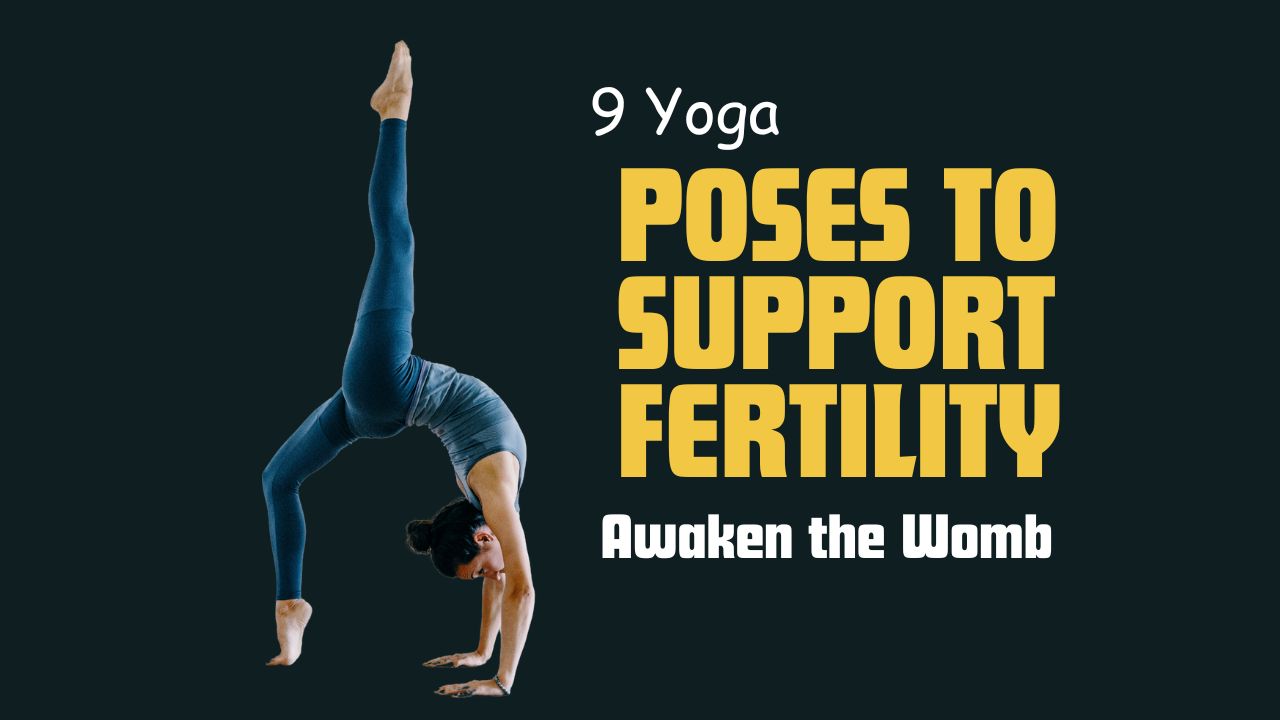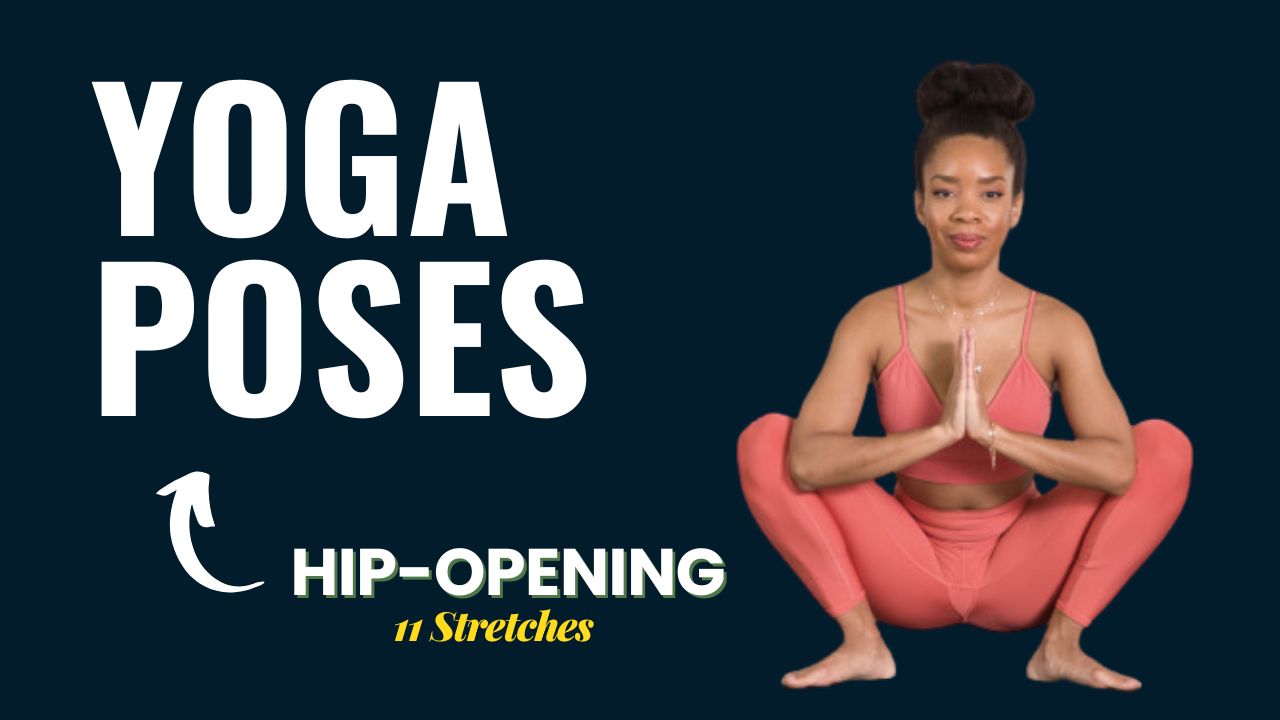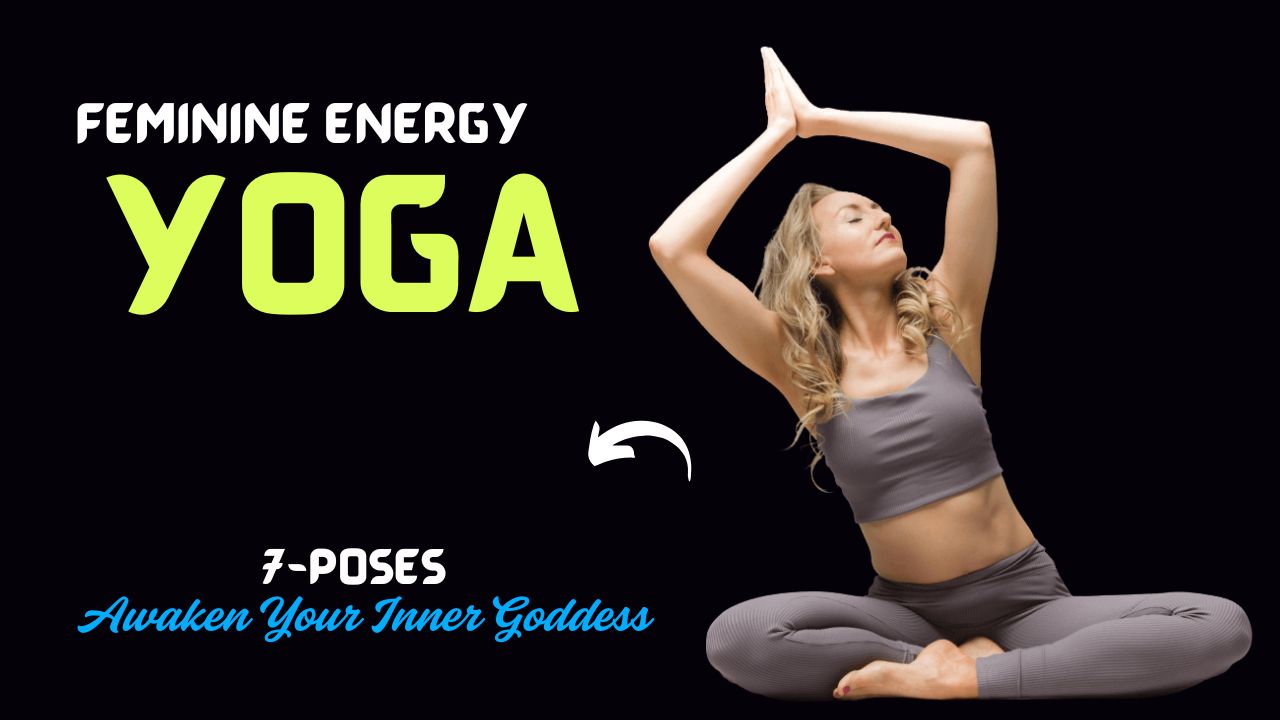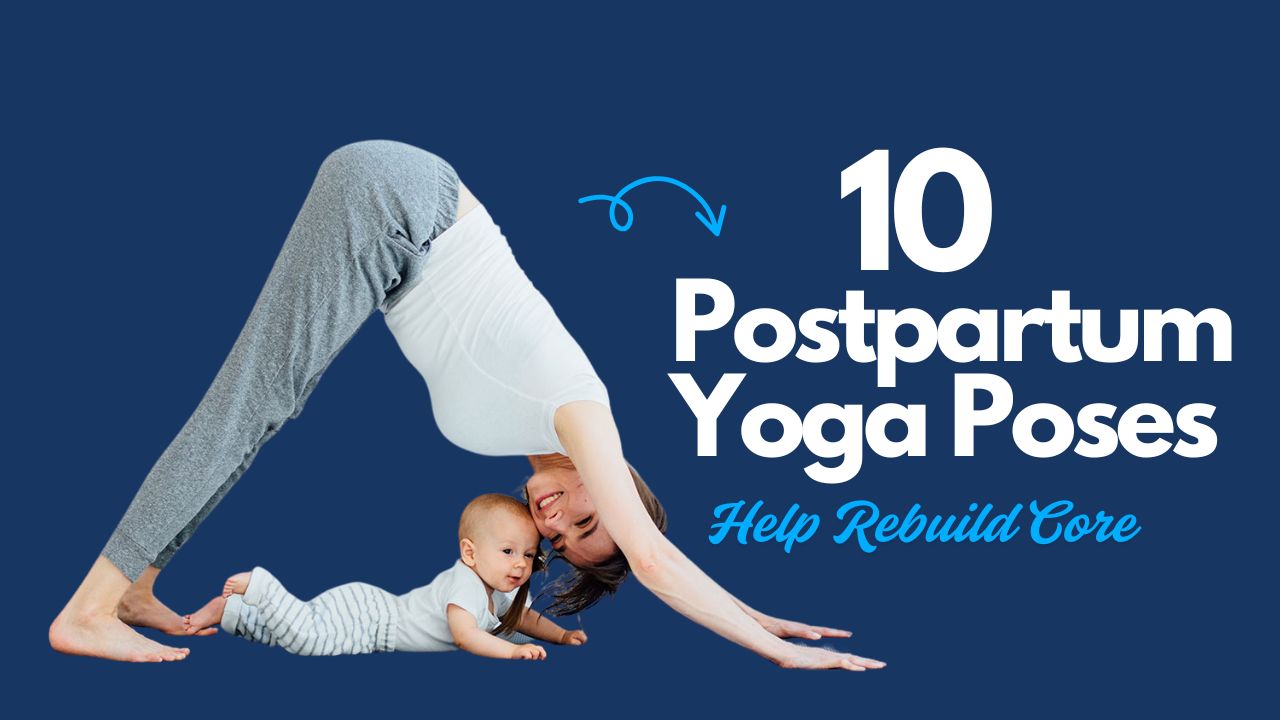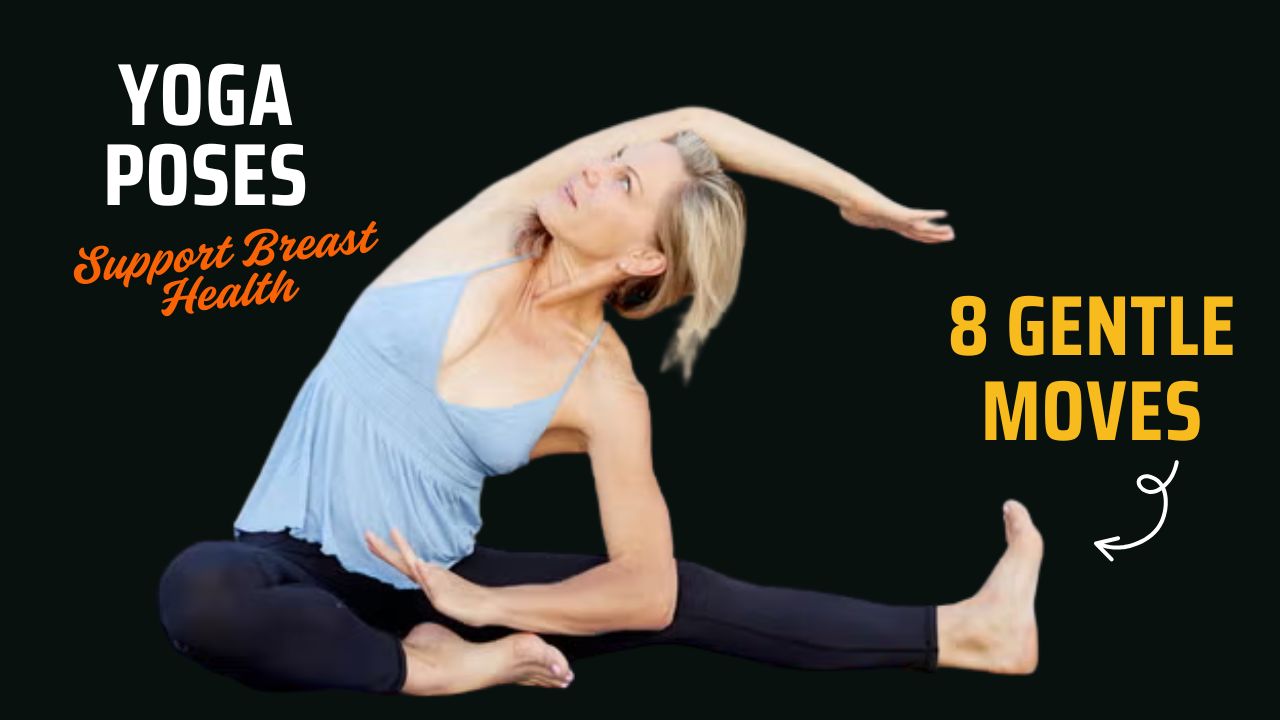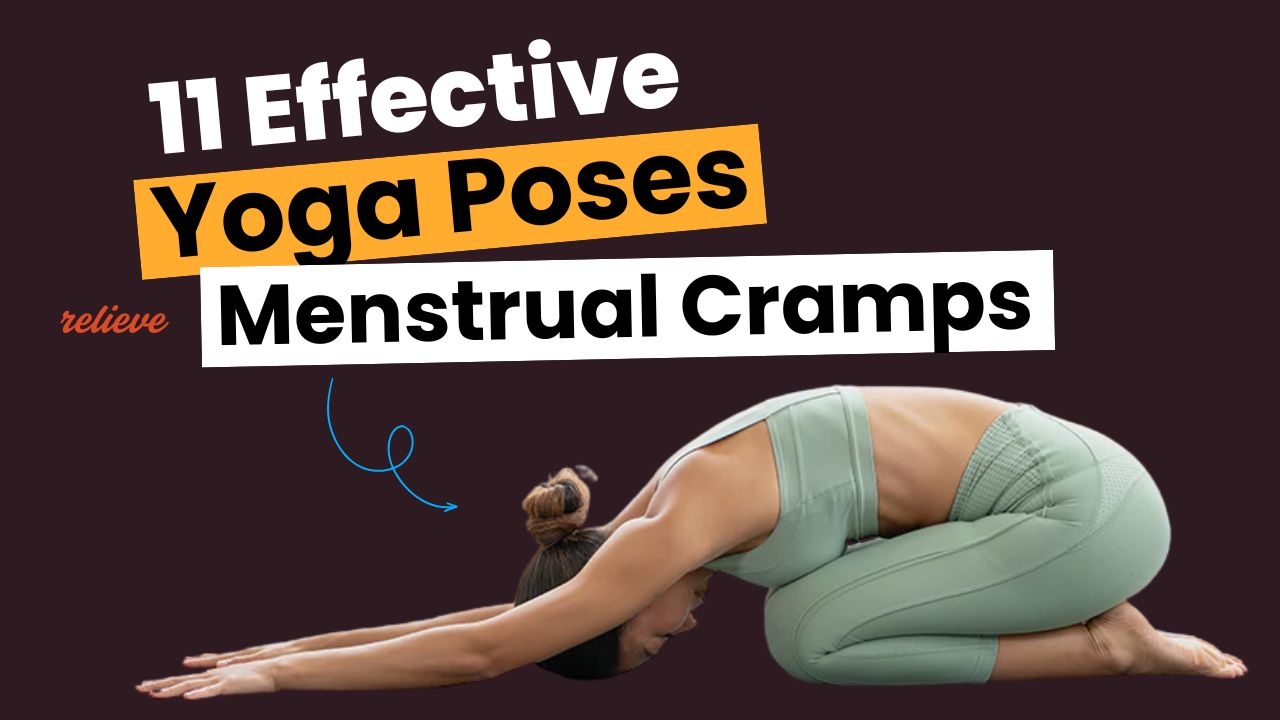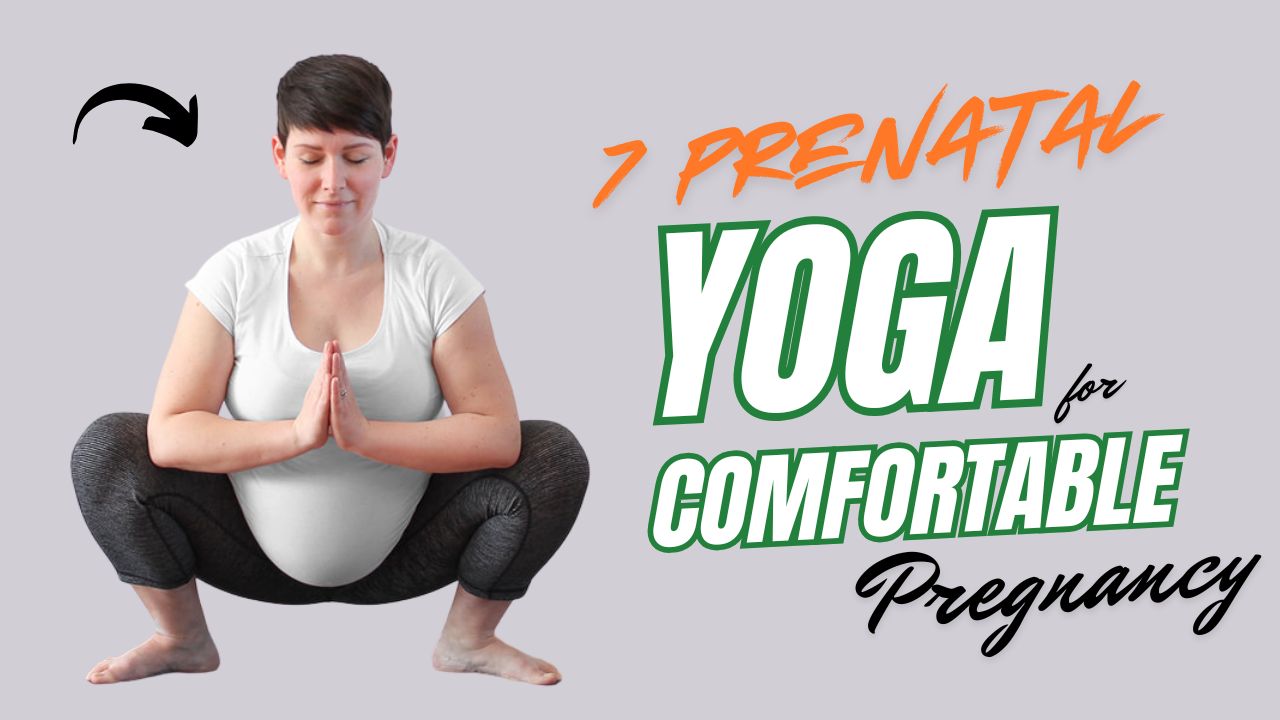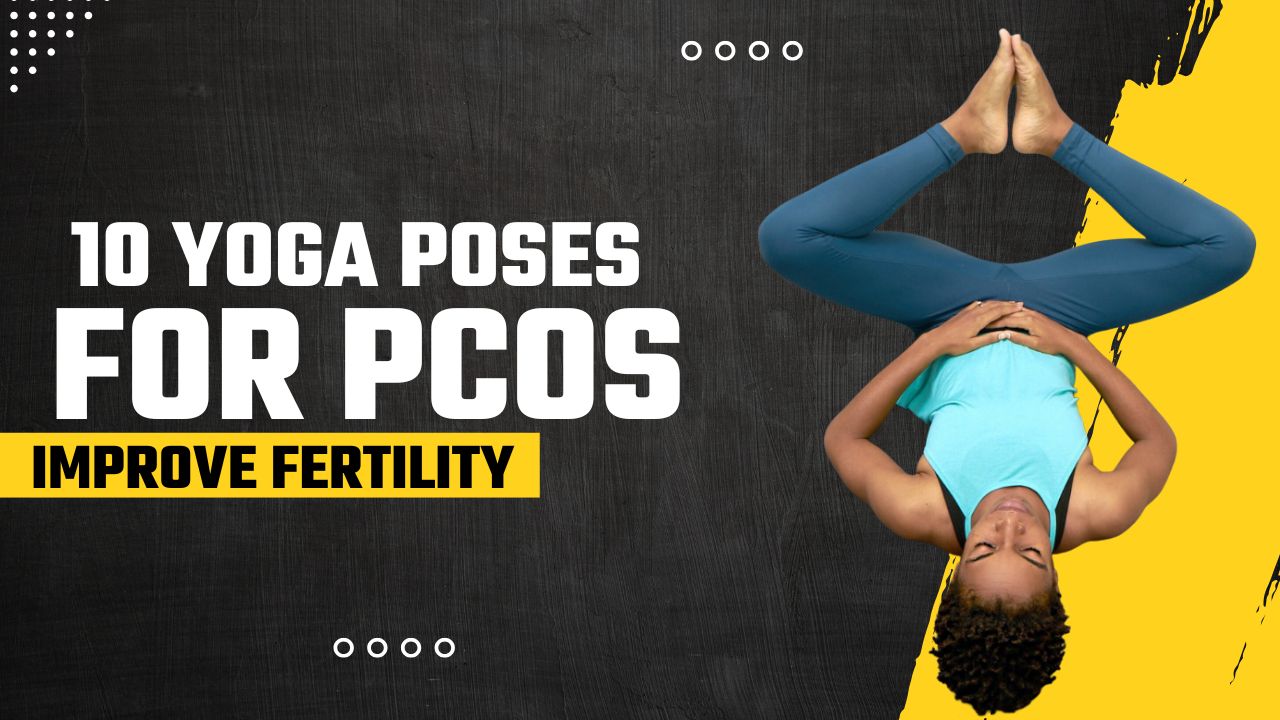Do you know that certain yoga poses can support breast health by improving circulation, reducing lymphatic stagnation, and releasing tension around the chest area?
Breast health is often associated solely with clinical check-ups and screenings—but physical movement, especially mindful movement like yoga, plays a crucial supporting role.
Yoga helps release tightness in the chest, stimulates lymph flow, and calms the nervous system—factors that promote a healthier internal environment for breast tissue.
In this guide, you’ll discover 8 yoga poses that gently support breast health. Each one includes simple instructions and tips for beginners or anyone looking for a calm, supportive practice.
Whether you’re practicing for prevention, recovery, or overall wellness, these poses offer a holistic foundation to nurture your body.
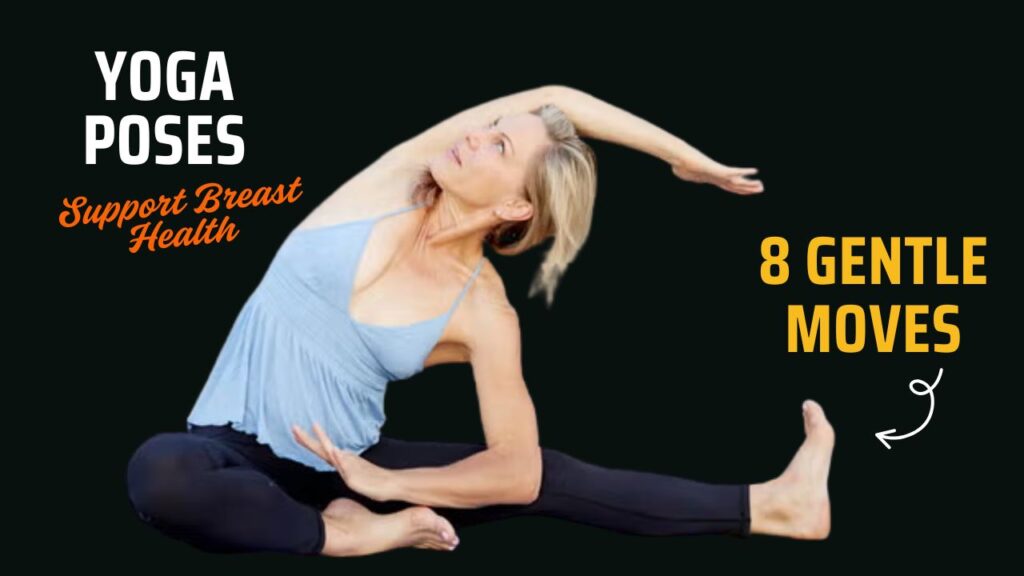
Table of Contents
What Can Happen After 30 Days of Practicing These Yoga Poses
| Positive Changes You May Notice | Why It Happens |
|---|---|
| Improved posture and upper body alignment | Regular chest-opening poses release tightness and rebalance shoulder positioning |
| Enhanced blood and lymphatic circulation around the chest | Gentle stretches stimulate lymph flow and boost detoxification |
| Reduced tension in the chest, shoulders, and upper back | Mindful movement relieves muscle tightness and fascial restrictions |
| Better breathing capacity and deeper inhalations | Opening the chest increases lung expansion and diaphragmatic breathing |
| A calmer nervous system and reduced stress levels | Relaxing poses activate the parasympathetic nervous system |
| Heightened body awareness and connection with breast health | Focused movement encourages mindful self-check-in and body literacy |
| Increased flexibility in the chest, spine, and shoulders | Regular stretching improves range of motion and reduces stiffness |
| A stronger sense of emotional balance and relaxation | Yoga combines physical and mental grounding to ease emotional strain |
Do & Don’t for Yoga to Support Breast Health
| Do | Don’t |
|---|---|
| Practice slowly and mindfully, focusing on your breath | Rush through the poses or force deep stretches |
| Use props like pillows or blocks for comfort and support | Avoid pushing into discomfort or ignoring pain |
| Wear comfortable, non-restrictive clothing | Don’t wear tight bras or clothing that restricts chest movement |
| Listen to your body and rest when needed | Practice through fatigue or overexertion |
| Stay consistent—practice regularly for lasting benefits | Expect instant results from occasional sessions |
| Consult your doctor if you have a medical history (e.g., surgery) | Skip professional advice if you have concerns or conditions |
| Focus on chest-opening and lymph-boosting movements | Avoid overly intense or unsupported backbends without guidance |
| Incorporate relaxation and breathing techniques for full benefits | Ignore the importance of breath and mindfulness in your practice |
8 Yoga Poses That Support Breast Health
1. Cat-Cow Stretch (Marjaryasana-Bitilasana)
Why it Helps:
This dynamic movement increases spinal flexibility, improves lymphatic flow, and stretches the chest and shoulders—areas that often hold tension due to poor posture or stress.
How to Do It:
- Begin in a tabletop position (hands under shoulders, knees under hips).
- Inhale, drop the belly, lift the chest and tailbone (Cow Pose).
- Exhale, round the spine, tuck the chin, and draw the belly in (Cat Pose).
- Move with your breath for 1-2 minutes.
Myth Buster: Many believe only intense exercise boosts lymphatic health, but gentle rhythmic movements like Cat-Cow are just as effective in stimulating the lymphatic system.
2. Bridge Pose (Setu Bandhasana)
Why it Helps:
Bridge Pose lifts the chest and stretches the front body, stimulating the thymus gland and improving circulation to the chest region.
How to Do It:
- Lie on your back with knees bent and feet hip-width apart.
- Press your arms and feet into the mat.
- Inhale and lift your hips toward the ceiling while keeping thighs parallel.
- Hold for 30 seconds, then slowly release. Repeat 2–3 times.
Did You Know? The thymus gland, located behind the breastbone, plays a role in immune function—and mild compression (as in Bridge Pose) may help stimulate it.
3. Cobra Pose (Bhujangasana)
Why it Helps:
This heart-opening pose expands the chest and stretches connective tissues surrounding the breasts, encouraging better circulation.
How to Do It:
- Lie on your stomach with hands under shoulders.
- Press the tops of your feet into the mat.
- Inhale and lift your chest using your back muscles (not your arms).
- Keep elbows slightly bent and shoulders away from ears. Hold for 15–30 seconds.
Tip:
Avoid overextending your lower back. Keep the movement gentle and focused on chest opening.
4. Thread the Needle Pose
Why it Helps:
This pose improves flexibility in the upper back and shoulders, enhances lymphatic drainage around the breast tissue, and reduces tightness from long periods of sitting or slouching.
How to Do It:
- Start in a tabletop position.
- Slide your right arm under your left arm, letting your right shoulder and temple rest on the mat.
- Keep hips elevated and breathe deeply into your upper back.
- Hold for 30 seconds, then switch sides.
5. Extended Puppy Pose (Uttana Shishosana)
Why it Helps:
Combining the heart-opening benefits of Downward Dog and Child’s Pose, this posture stretches the chest while gently decompressing the spine and shoulders.
How to Do It:
- Begin in a tabletop position.
- Walk your hands forward and lower your chest toward the mat, keeping your hips stacked over knees.
- Let your forehead or chin rest on the ground.
- Hold for 30–60 seconds, breathing slowly.
Fact: This pose helps open the fascia (connective tissue) in the front body, which can restrict breast movement and lymph flow when tight.
6. Seated Heart Opener (Vajrasana Variation)
Why it Helps:
This posture encourages expansion through the upper chest, helping to reverse the effects of hunching and promote healthy circulation around the breast area.
How to Do It:
- Sit on your heels (Vajrasana).
- Interlace your hands behind your back, palms facing in.
- Inhale, lift your chest, and pull your hands slightly downward and back.
- Stay for 5–8 deep breaths.
Tip:
If clasping your hands is uncomfortable, hold a strap or towel between them.
7. Reclining Bound Angle Pose (Supta Baddha Konasana)
Why it Helps:
This restorative posture helps release the chest, calm the nervous system, and promote lymphatic drainage—all essential for breast tissue recovery and hormonal balance.
How to Do It:
- Lie on your back and bring the soles of your feet together, allowing knees to fall outward.
- Place folded blankets or yoga blocks under each knee for support.
- Open your arms out to the sides, palms facing up.
- Rest for 3–5 minutes, breathing deeply.
Bonus: Add a bolster or pillow under your spine to elevate your chest slightly for a deeper heart-opening effect.
8. Legs-Up-The-Wall (Viparita Karani)
Why it Helps:
While this pose primarily supports circulation in the legs and pelvis, it also allows blood and lymph to return toward the heart and chest area, promoting detoxification and relaxation.
How to Do It:
- Sit sideways next to a wall, then gently swing your legs up the wall as you lie on your back.
- Adjust your hips close to the wall and rest your arms beside you.
- Stay in the pose for 5–10 minutes.
Calming Effect: This pose activates the parasympathetic nervous system, helping to reduce stress—a known factor in breast tissue inflammation and hormonal imbalance.
Final Thoughts
While yoga is not a replacement for regular breast screenings or medical care, it is a gentle and empowering way to support your breast health naturally.
These 8 yoga poses can help reduce physical tension, encourage healthy circulation, and foster a deeper connection with your body.
Practicing regularly—even just 10 to 15 minutes a day—can make a difference in how your body feels and functions. Always listen to your body, breathe deeply, and approach your practice with care and curiosity.
Frequently Asked Questions (FAQs)
Can yoga actually improve breast health?
Yes, yoga can support breast health by improving circulation, enhancing lymphatic drainage, reducing muscular tension in the chest, and helping manage stress levels—all of which are beneficial for maintaining healthy breast tissue.
How often should I practice these yoga poses for best results?
Practicing these poses 3 to 5 times a week, even for just 10–20 minutes per session, can offer noticeable benefits. Consistency is more important than intensity when it comes to gentle yoga for breast health.
Are these poses safe for women with a history of breast surgery or cancer?
Most of these poses are gentle and restorative, but it’s important to consult with your healthcare provider or physical therapist before starting any new movement routine, especially post-surgery or during recovery.
Do I need yoga props to perform these poses?
Props like blocks, straps, and bolsters can enhance comfort and accessibility, especially in poses like Reclining Bound Angle or Legs-Up-The-Wall. However, they are not strictly necessary—you can use pillows or folded blankets as alternatives.
Can these poses help with breast pain or tenderness?
Gentle chest-opening poses may help reduce mild breast discomfort caused by tension or poor posture. However, if breast pain is persistent or severe, it’s essential to consult a medical professional.
What time of day is best to do these poses?
These yoga poses can be practiced at any time of day. Morning practice can energize the body, while evening sessions may help you relax and unwind. Choose a time when you can be consistent and undisturbed.
Are there any poses I should avoid during menstruation or pregnancy?
Most of these poses are gentle and safe, but during pregnancy, modifications might be necessary—especially for poses involving deep backbends or lying flat on the back. Always consult your healthcare provider or a prenatal yoga instructor.
Will these poses change the appearance or size of my breasts?
Yoga won’t directly change breast size or shape, but it can improve posture, muscle tone, and circulation, which may enhance the overall appearance and support of the chest area.
Is it okay to practice these poses even if I’m a beginner?
Absolutely. These poses are beginner-friendly and can be easily modified to suit different levels of flexibility and comfort. Start slowly and use support as needed.
Can men benefit from these yoga poses for chest health too?
Yes, these poses are beneficial for everyone. They help open the chest, improve posture, and enhance respiratory and lymphatic function, making them suitable for all genders.
